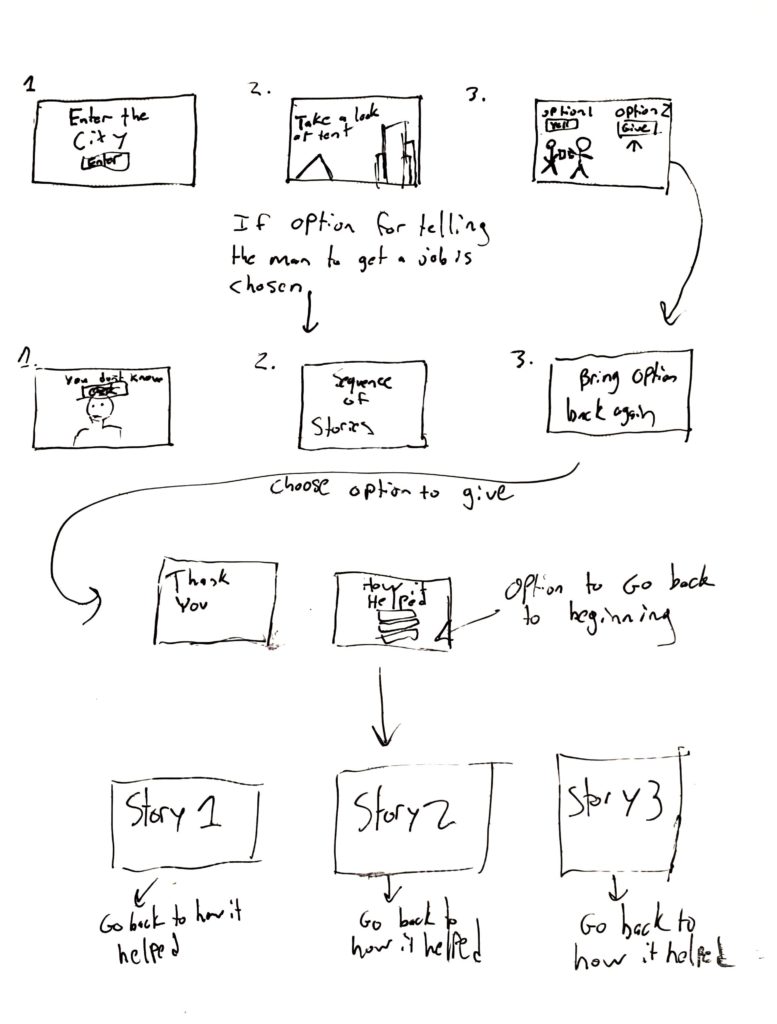
Project wireframe

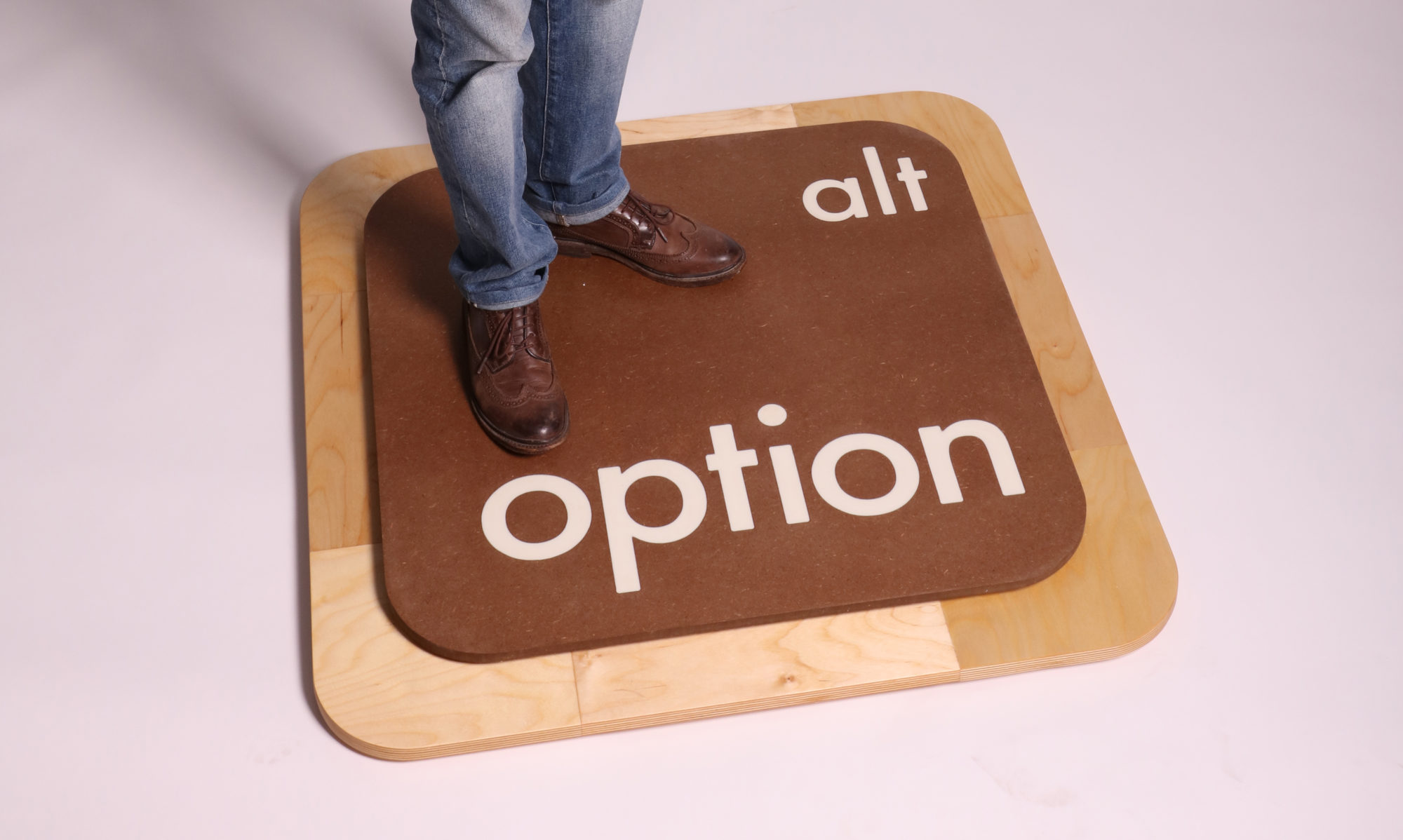
design courses, syllabi, schedules, resources and policies

Mouna Andraos is a Co-Founder of Daily tous les jours. She Co-Founded this with Melissa Mongiat in 2010. The art studio in which they created is best known for it’s work in public places and is based in Montreal Canada. Mouna holds a Masters degree from New York University’s Interactive Telecommunications Program (ITP) and a Bachelor degree from Concordia University. She was a research fellow and is an alumnus of Eyebeam Center for Art and Technology in New York City, and in an adjunct professor at Concordia University’s Design and Computation Arts department, and UQAM’s École de Design. Prior to Co-Founding a design studio, Mouna worked under the label Electronic Crafts exploring the intersection of mass-produced electronics and handmade crafts to create playful, sustainable, or participatory objects.
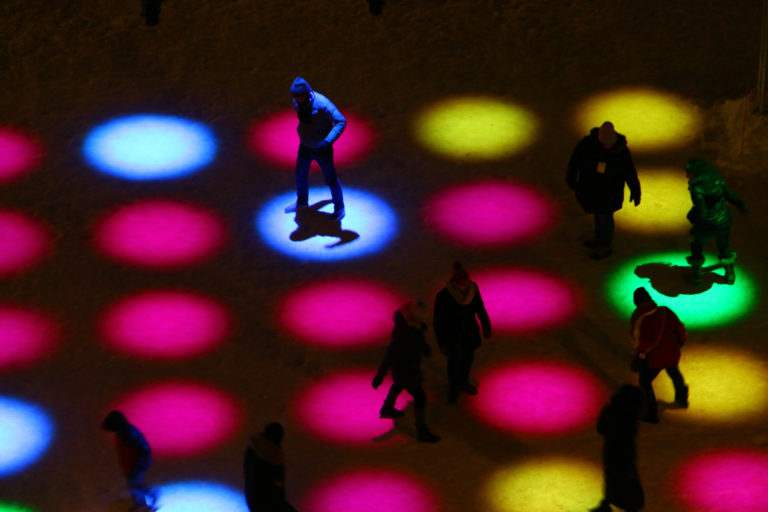
Score is an interactive game created where the rules change each match. Players are prompted to step on different circles and must pay attention to the rule as they change and become more complex.
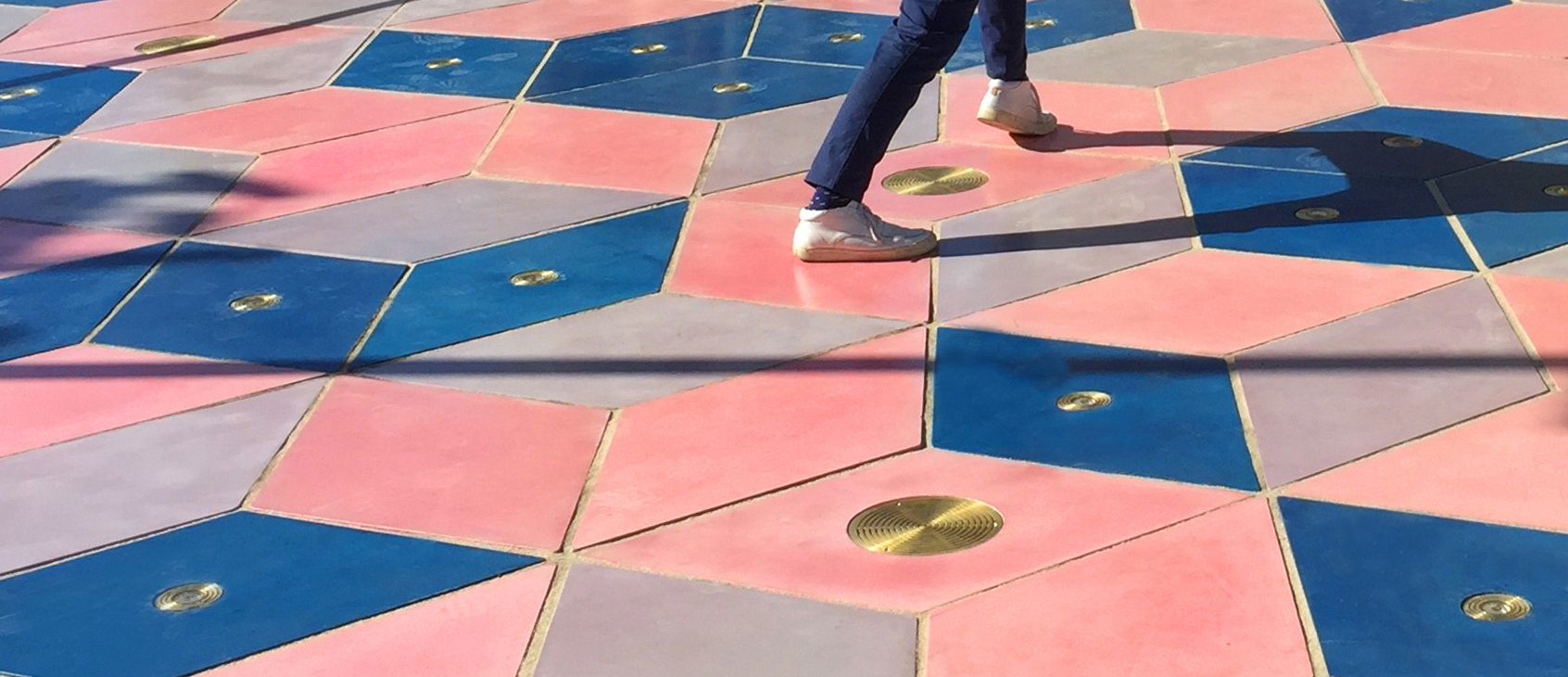
Musical Shadows is interactive pavement. It uses light sensors that are able to play different tones and music as your shadow moves or dances around, playing interactive music based on movement. The music will actually change throughout the day based on the intensity of the sun.
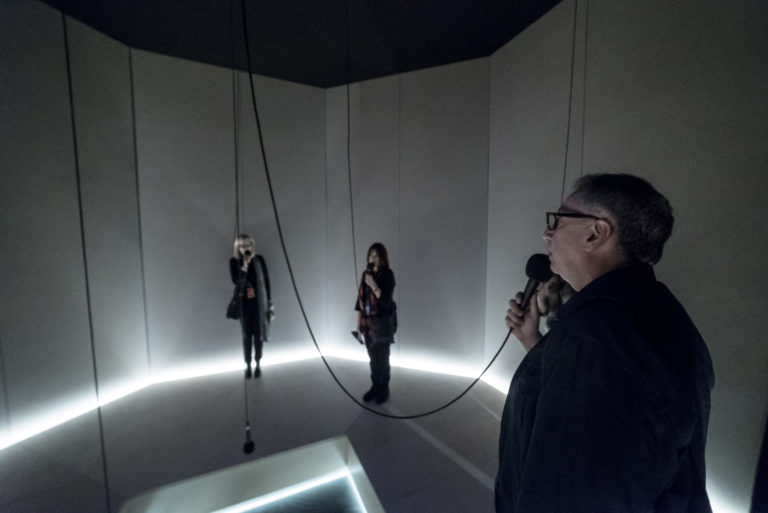
I heard there was a secret chord is an art installation that plays the song hallelujah. The sound can get louder or quieter based on how many people are listening to that song at a given moment and it displays the amount of people listening to that song. All of this takes place in an octagon room with microphones hanging from the ceiling.
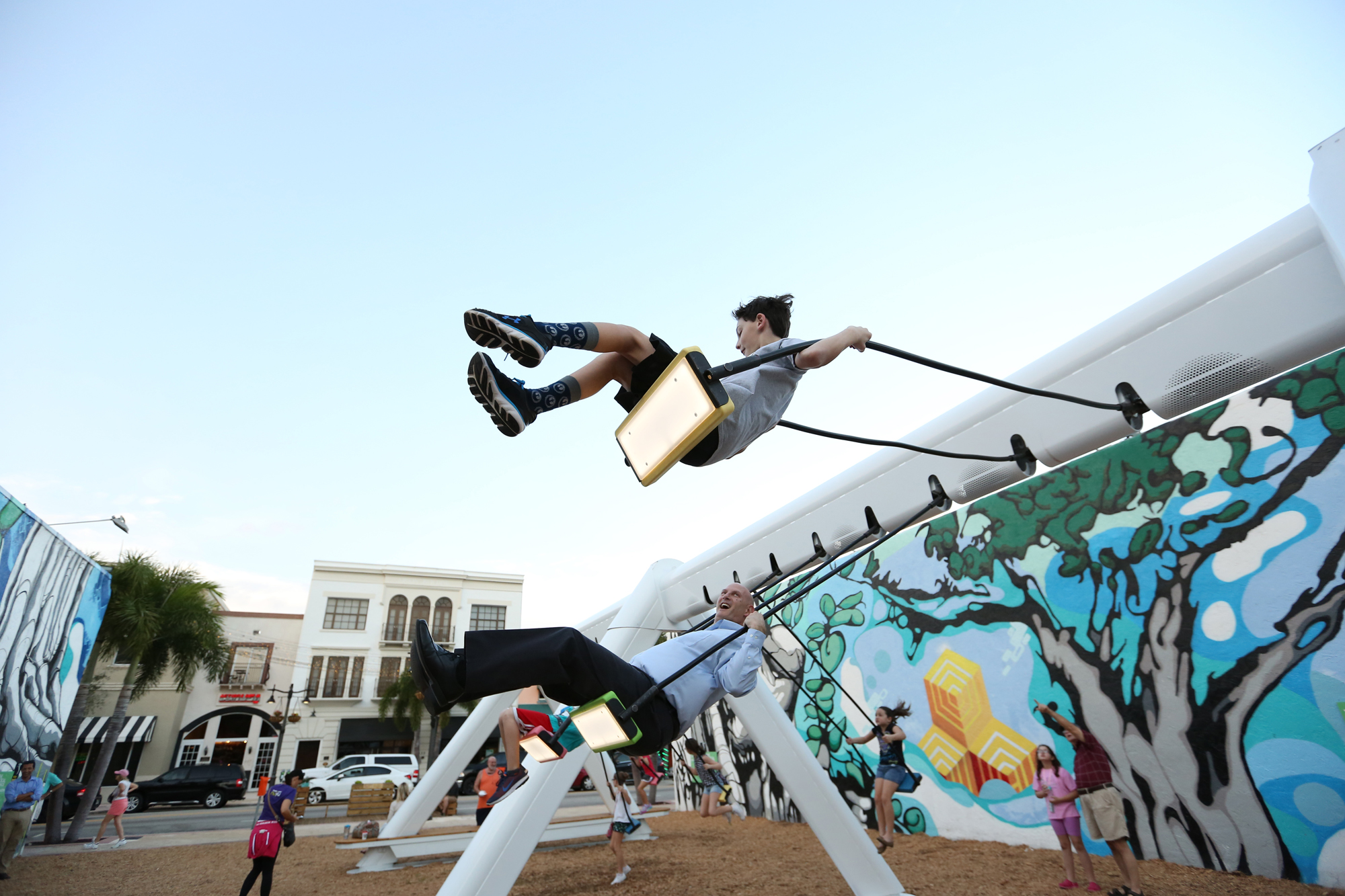
This is my favorite one of her artworks that she was part of. This art installation consists of 21 musical swings that are all interactive. Each swing allows you to play music with your entire body by swinging and prompts you to collaborate with others and swing at the same time. Swinging at the same time will play better sounding music.
The Musical Swings installation was created in 2011, the installation has become a celebrated icon of Montreal’s entertainment district, returning seasonally every spring. As a result of its success, a touring version of the Musical Swings was created and has been traveling the world, receiving a number of international awards and recognitions. A new permanent version of the work is also available for cities around the world.
Each swing triggers notes from a classical instruments: piano, guitar, harp and vibraphone. A color code indicates which instrument is played and invites the public to try different seats. The higher the swing, the higher the note. When the swings move together in unison, they create a musical composition through which unique melodies can emerge if participants cooperate. The gentle, kinetic quality of the acoustic sounds blends seamlessly into the environment in which it is located in.
Collaboration is rewarded when participants swing at the same rate, triggering more complex melodies. This system allows for the people swinging to feel like they are writing and playing music with their entire bodies and encourages team work in order to produce the best musical sounds.
This designer really focuses on having the public come together and create something better. By having people come together and play games, dance, and make music she is creating a better world where people can interact with each-other in a fun manner.
About Marioneta
Marioneta is an installation for the Children’s Museum of Pittsburgh which uses the Microsoft Kinect v2 to allow guests to embody a collection of antique puppets in a virtual environment. The focus is on creating an experience wherein elements in the world react to the users’ actions through these puppets.
Why antique puppets?
Puppet models in the experience are based on a collection of puppets donated to the museum by Margo Lovelace. The original puppets are carefully exhibited in a large display case on the wall in the museum. Many of the puppets in the museum’s collection are antiques, fragile or valuable and not suited to hands-on play by the museum’s young visitors. Marioneta uses technology to make museum puppets available for imaginative and interesting play.
What is the experience like?
The experience is composed of auto-rotating seasonal stages and season-related interactive objects that have visual and audial feedback. Users can throw a pumpkin in the fall, pick up an ice ball in winter, play with cowbells in spring, and break a lantern filled with fireflies in summer.
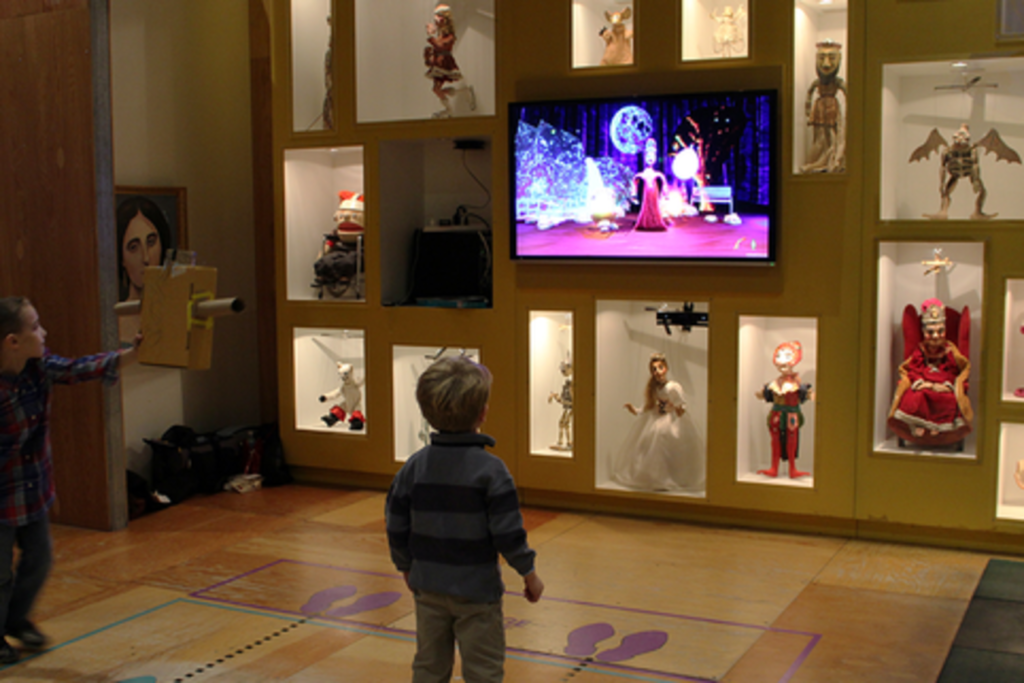

Who worked on this project?
A team of students worked on this project including:
Christina Tarn as Producer
Maria A Montenegro as Tech/Programming Lead
Emily Chang as Programmer
Alex Moser as 3D Artist/Techinical Artist
Hyunghwan Byun as Experience Designer
I decided to look more into Hyunghwan Byun because I aspire to become a UX designer. It would be helpful for me to learn more about his work and his design process.
Link to project website:
http://www.etc.cmu.edu/projects/marioneta/index.html
About Hyunghwan Byun

Hyunghwan is an Experience Designer who wants to be a connecting point between technologies and human. He wants to design human-centered and amazing experience. He studied Materials Science and Engineering during undergraduate program before coming Entertainment Technology Center at Carnegie Mellon University. His experience covers various fields including Game Design, Sound Design, Film and Physical Computing.
Hyunghwan’s Experience:
Interaction Designer, Seerflix Inc. | 2015 – 2016
Experience design, rapid prototyping, UI design, qualitative user research, concepting, design system development, for Web-based interactive 3D authoring application
UX Designer, Adobe | Sep 2016 – Present
Experience design, rapid prototyping, qualitative user research for AI and machine learning features as part of the Photoshop team
Hyunghwan Byun’s Work
Marioneta
Here, he explains the design goals as well user journey maps, prototyping selection design, coming up with user personas, and gesture prototyping and more.
https://byun.design/marioneta
DESIGN GOALS

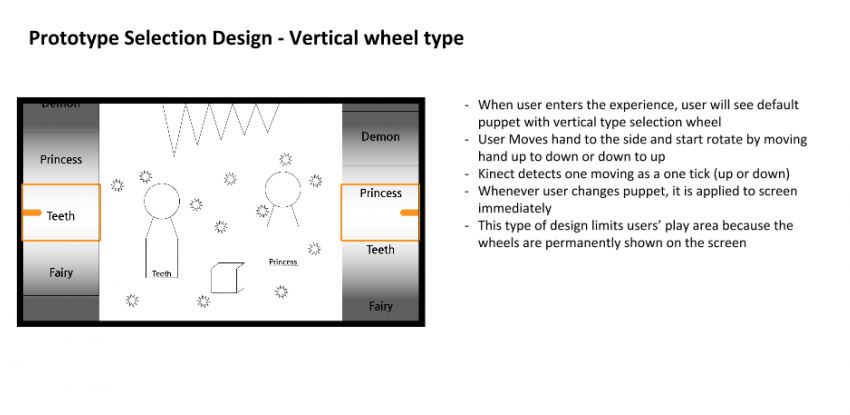
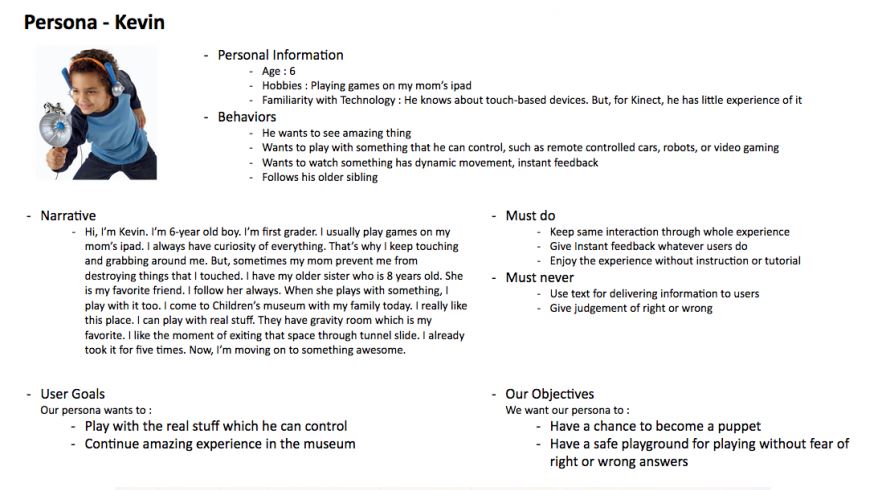
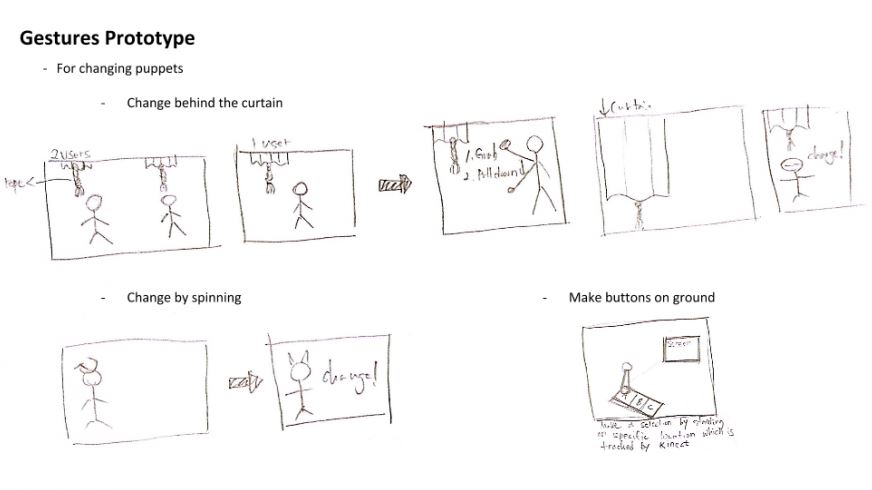
Toy Train’s Adventure VR Prototype
This particular work interested me because I am interested in game design and VR.
https://byun.design/toy-trains-adventure-vr
ABOUT
This prototype is a 2-week long one-man project running on the Google Cardboard VR platform. The objective is moving rabbits around a map to a safe area to avoid the lion’s threat. The player helps moving rabbits by keeping the train’s route safe.
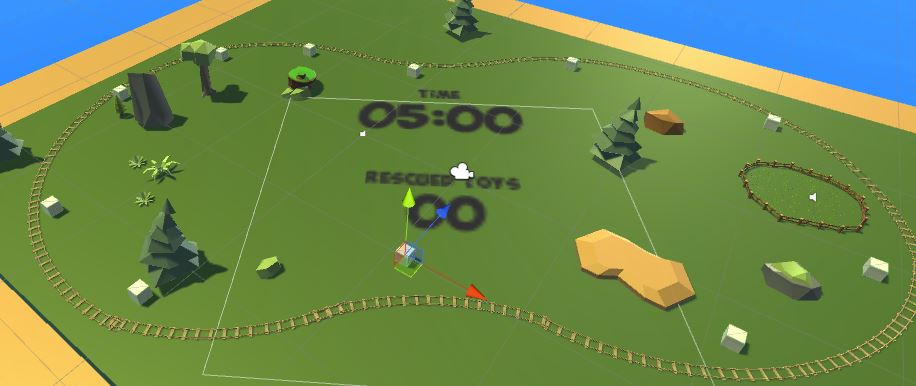
GAME OBJECTIVE
GAME DESIGN
Rabbit spawner
Rabbits are spawned at one of the spawning positions randomly.
The spawning cycle is determined by the remaining time to create gradually increasing difficulty.
Lion spawner
Lions are spawned at one of the spawning positions randomly.
The spawning cycle is determined by the remaining time to create gradually increasing difficulty.
Lions are set to Navmesh agent and avoid props on routes automatically.
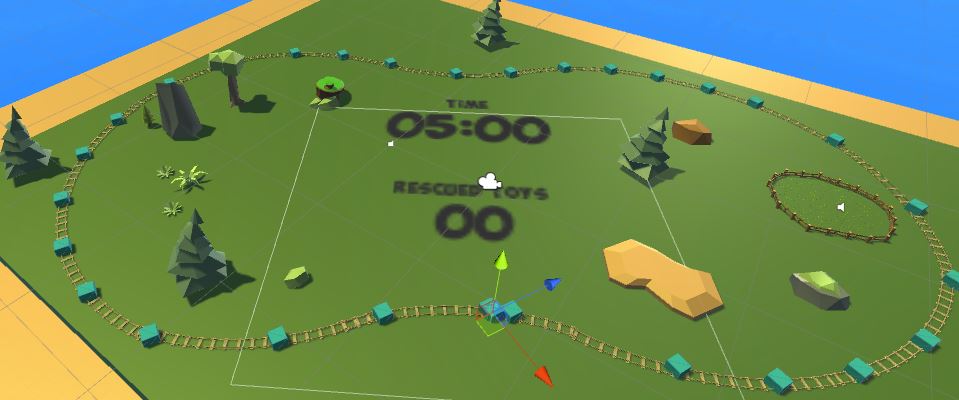
Mushroom spawner
The mushroom bomb is spawned at the position the player gazes at.
The mushroom bomb is spawned with a particle system and it destroys colliding lions.
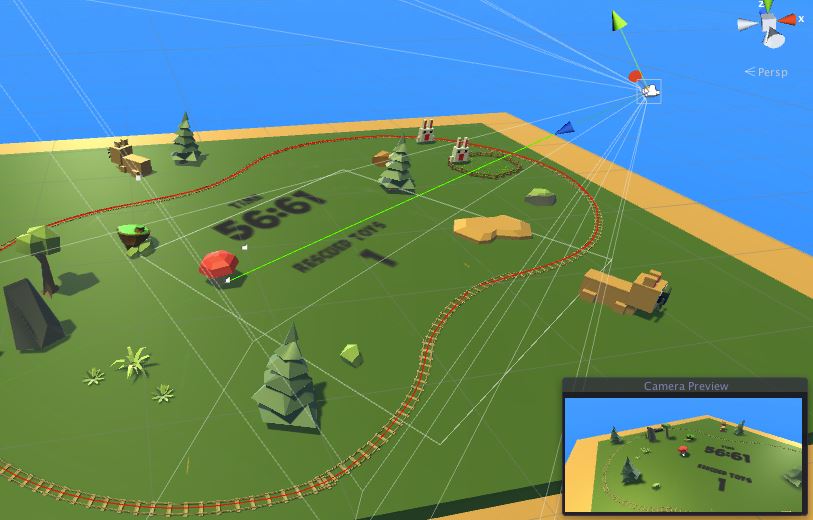
I really enjoy how he breaks down the individual parts in the game design. He also talks about Future Improvements that he would make to improve the game.
Object Selection Tool | Photoshop
This is his process of how he created a tool for photoshop.
You can find more information on his process by visiting his website:
https://byun.design/objectselectiontool
A Selection Tool with Intelligence
The Object Selection tool is a Photoshop tool that automatically creates a selection around the borders of the object users highlight. The tool simplifies the process of selecting an object in an image with the help of a semantic understanding of the image.
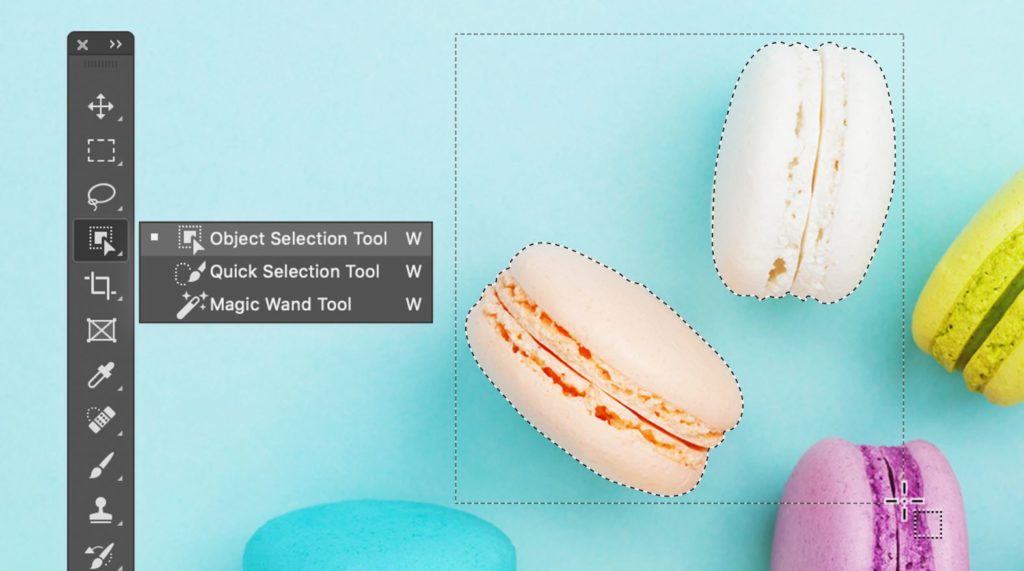
Select an Object EffortlesslyCreate a rectangular selection around the object. The tool automatically snaps the selection to object remove over-selected area or include less-selected area
HOW IT WORKS
Create a rectangular selection around the object.
The tool automatically snaps the selection to object.
Remove over-selected area or include less-selected area

Curvation Pen Tool | Photoshop
This is another tool that he created for Photoshop. It is neat to see someone’s work with Adobe and how huge of an impact they can make.
https://byun.design/curvaturepentool
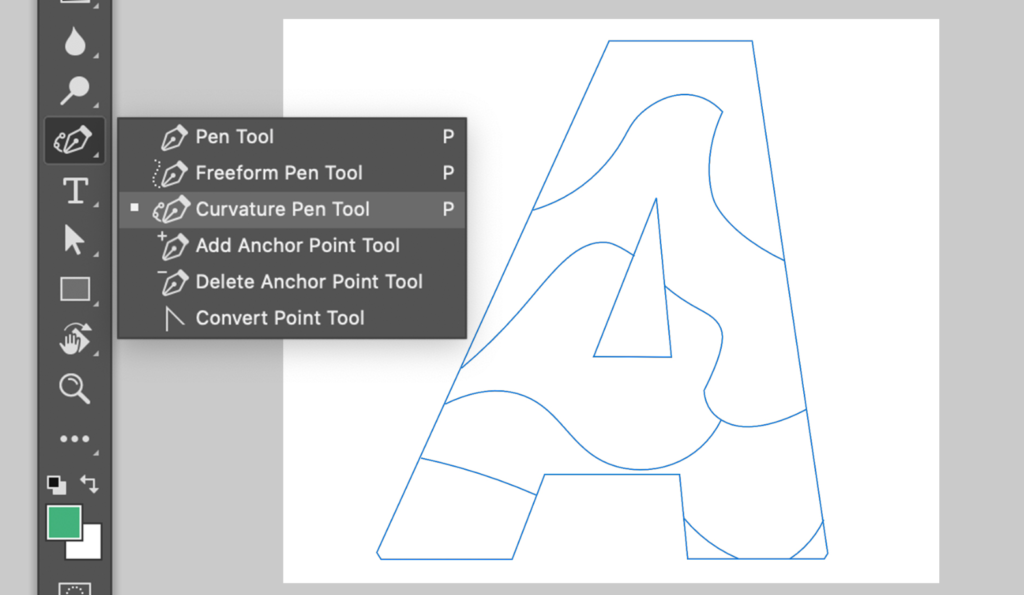
DRAW PATHS NATURAL
Curvature Pen tool in Photoshop is designed for users to create precise paths without dealing with confusing Bezier handles that we see from the traditional Pen tool. Path drawing is as simple as just placing points on the canvas.
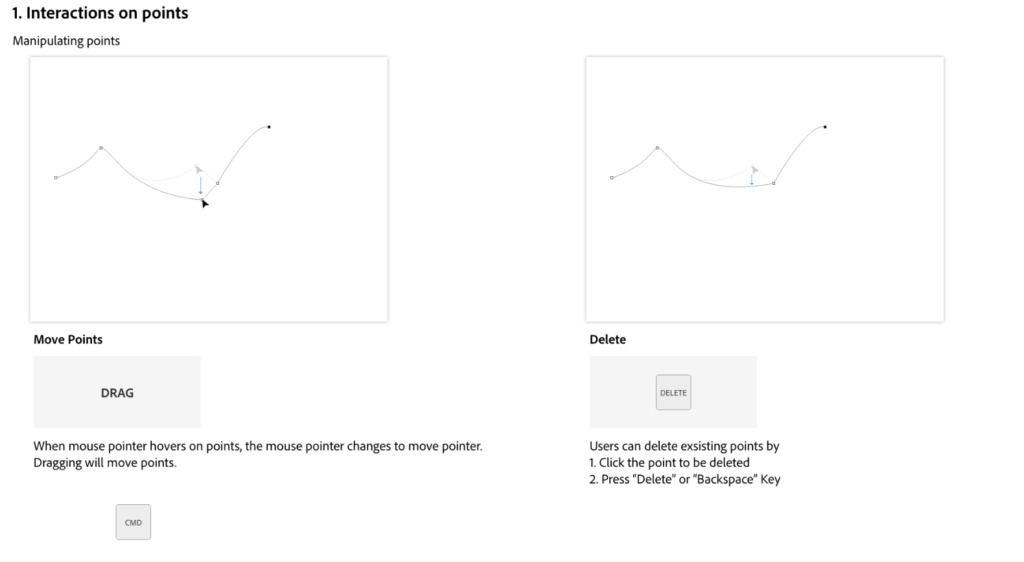

Overview & My Thoughts
Overall, I really enjoyed looking into this Marioneta Project, understanding the process and the goals behind the project. Since I was able to experience this piece in the Children’s Museum I was really able to see the curiosity and care-free nature that it brought out of people including myself.
Throughout this research assignment, I didn’t realize that I would find another designer that I admire. Hyunghwan Byun has become a designer I look up to. Not only does he break down the process behind what he does, but he also pays close attention to detail along the way. I believe this is what makes him so successful and also land a job at Adobe. The impact that he is making with interactivity and UX Design is the same impact that I strive to make in the corporate field.
Daniel Rozin
Overview:
Daniel Rozin is an interactive artist, educator, and developer. His works are most prominent in the area of interactive digital art and often strive to make the viewer a part of the piece. His sculptures take the forefront of the pieces with the digital computerization in the background, out of site. Having done hundreds of exhibitions, Rozin is a very well known interactive artist having art all across the world.
Work:
Daniel Rozin in his work finds an idea and explores it through many ways often repeating a concept. He has done many works like kinetic sculptures, proxxi prints, and glass sculptures, but is most known for his many mechanical mirrors. Rozin uses many different items and mechanically rotates them to display the reflection of the viewer. Daniel stated, “The two main ideas that my work investigates are viewer participation and image creation”, and the mechanical mirrors do exactly that. The three works I will be highlighting are Self Centered Mirror, Yves and Marilyn / New York Skyline Proxxi composite, and Wooden Mirror.
Self Centered Mirror –
Yves and Marilyn / New York Skyline Proxxi composite –
Wooden Mirror – In Depth
Overview – The first mechanical mirror Rozin had ever built, now displayed in the Children’s Museum of Pittsburgh. Utilizing a camera, computer, stepper motors and wood blocks, this piece allows the user to see themselves in an uncommon way.
Interactivity – The user faces the piece and discovers slowly what it is by noticing the reflection. In the picture displayed, the camera is set up so the discovery is quick with the user instantly realizing it is them being displayed. Inside the Children’s Museum of Pittsburgh I noticed children often try to make it move a lot by running back and forth triggering the steppers to switch and make noise.
How it Works – At its simplest the Wooden Mirror uses a camera, computer, stepper motors, wooden blocks and a light. The camera sends the video image of the viewer to the computer which decides the areas of the image are light/dark which sends messages to the stepper motors to turn the wooden blocks in a certain direction to replicate the light and dark areas. There is also a light that will help promote the bright areas by having the brightest parts of the image have the wooden block face the light.
Conclusion –
Daniel Rozin is a well experienced interactive artist that looks to explore concepts deeply. Finding a concept that utilizes the interactivity of a user along with displaying an image. His works in the Self Centered Mirror, Yves and Marilyn / New York Skyline Proxxi composite, and Wooden Mirror execute his philosophy perfectly. Certainly an artist to study and look out for in the future.
Overview
Dalziel & Pow is an independent creative agency based in London. Starting in 1983, David Dalziel and John Pow designed pubs, clubs and bars. Not so long after, they shifted into working with high street brands such as Timberland, Volkswagen, Google and more. These guys along with the creative agency they built have changed the game for a retail and brand experience. They come alongside these businesses to strengthen their brand by using much more than a logo and flyers to engage the companies audience.
As an agency, they have four different areas of expertise:
Each area of expertise has the same focus of engaging the whole brand. Like any equation, they are presented with a problem and with their team present a solution to encompass the identity of the company’s brand.
Aside from Dalziel & Pow’s website being exceptionally organized and appealing to look at, the examples of their work make what they do so special. I am going to walk through three examples of their work and focus in detail on one.
Work
D&P accomplished the company’s goal of making first-time mothers feel welcomed along with creating a space that is engaging to visit.
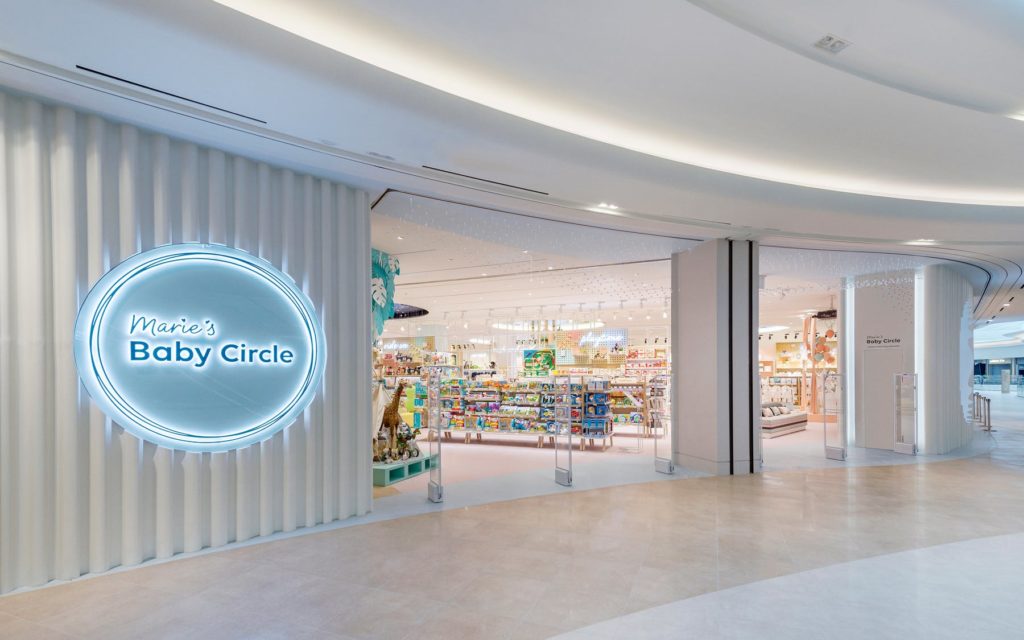
D&P accomplished the company’s goal of engaging their customers in an in-person retail experience.
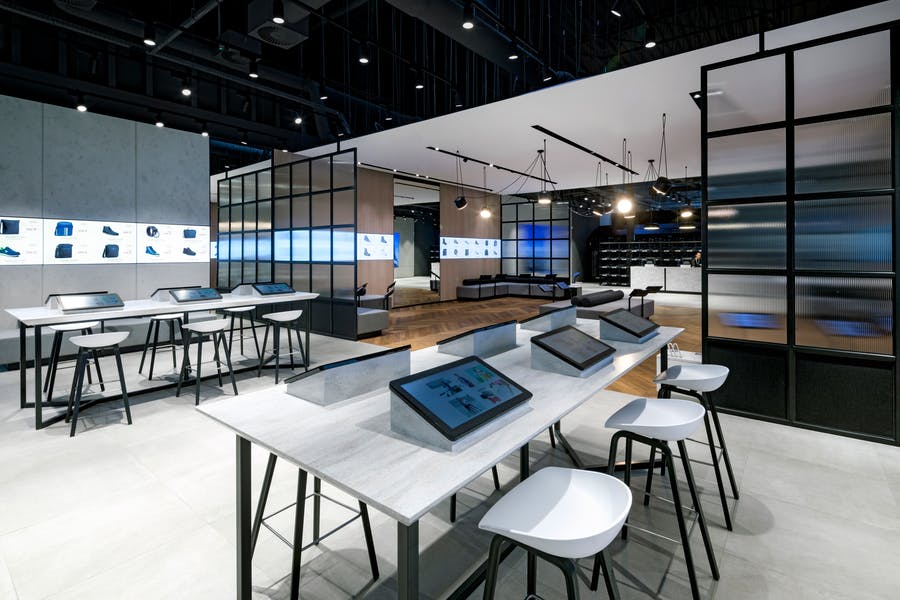
D&P accomplished the company’s goal in creating a very hands-on experience that represented a fun narrative of owning a car.
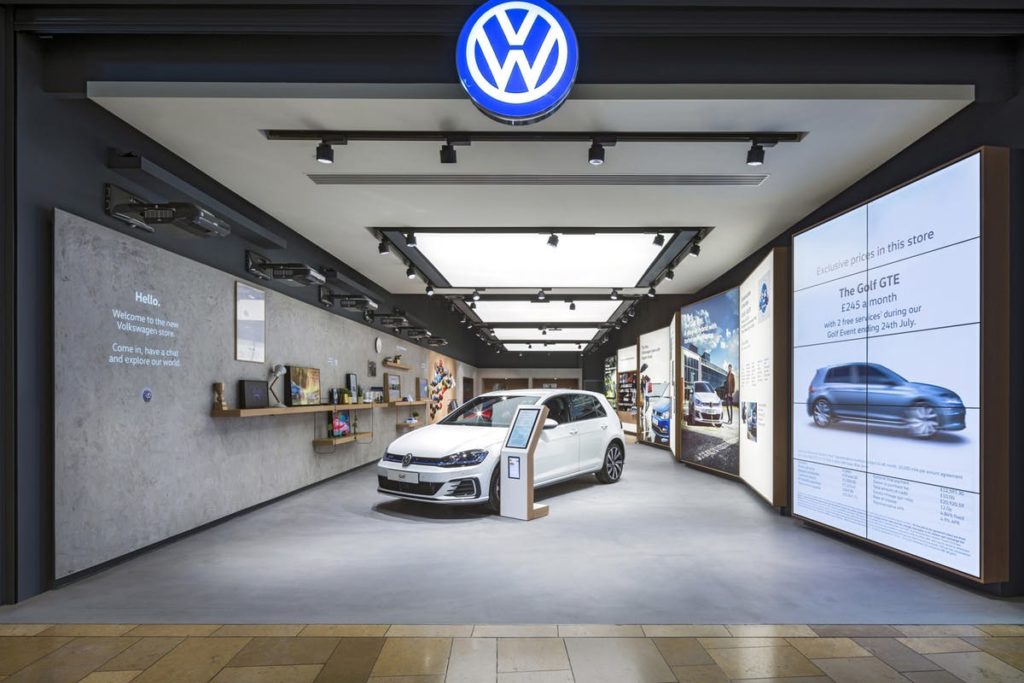
Work In-Depth
Out of the few pieces of D&P’s work I presented, I want to put the microscope over the Volkswagen project to see how the goals accomplished made an impact on the brand.
Audience
The Volkswagen product is normally geared towards adults because they are the ones who can drive and purchase it. Though this is true, D&P saw a greater message that includes more than the adult audience. Adults, teenagers, kids, and entire families experience transportation in a vehicle everyday. Even though not everyone in the audience can purchase the product, they are still involved in the experience of it. If younger kids do not like the comfort and experience of a vehicle, that has the potential of changing an adult’s choice in a car. Therefore, some of the design of the store was geared towards younger and older audiences alike. For example, the interactive light protections on the wall was fun for the customers to press the buttons and see things move. When families walk into this store, the kids are just as entertained as the adults because they are both interacting with the design. D&P did a really good job in helping Volkswagen identify their audience.
Story-telling
Similar to the idea of knowing who your audience is, everyone loves a good story. If someone walks into this store with their family who loves to go on road trips and sees interactions, pictures and stories gearing towards road tripping with the family, they might be more inclined to buy the product. People like products but I think they value the experience they’ll have using the products even more. D&P showed customers different ways they can use a Volkswagen car (road tripping, packing, shopping, etc.) and the joy that comes when you do own one. D&P did a great job showing the things you can experience by owning a Volkswagen.
Hands-on
Have you ever watched a How-To video? Those videos usually consist of how to make a product or attain a certain outcome. In a way, D&P took customers through that experience by their design. By using the ipads in the store, you were able to customize your own Volkswagen car. In the store, they had different fabric and parts of the car to display the items that make-up the vehicle. One of the light projections they had was changing the outside color and design of a car by a click of a button. This process of building something engages customers because people love seeing how things are made. Going back to the idea of knowing your audience, the hands-on experience is also for kids. Kids love to touch things, therefore, when they see the color of the car change, they experience can enlighten and engage them. D&P did a wonderful job of including the customers in the experience of building cars.
Overall
Dalziel & Pow do a wonderful job of engaging the whole brand of a company in their work. Their work is clean, intentional, purposeful and engaging. I am blown away by the experiences they create and how they engage people into those environments. I would love to work in a creative environment such as this one!
I chose to look at Mailchimp’s 2019 annual report. On this page as you scroll down images slowly start to move up as if you are picking up posters. As the images change the titles that say business and unusual flicker from black to pink. I really enjoy the subtle nods to what they are talking about. Its very easy to navigate because you just scroll up and down. I also really enjoyed the use of colors and the poster style of the images.
+
I chose to do “Problem Studio” because I liked it’s minimalistic design. I like how good it was at grabbing my attention. I think it’s funny that this particular website is kind of boring at first, in spite of it promoting interesting website design. It helps me to rethink what makes a website aesthetically pleasing. When you scroll down though, the website looks more and more interesting, which helps to promote their skills in web design.
The color is limited to six pastel colors. It is flat in illustration but done very well. There is a button to download the site and a video to play. They just scroll down to navigate. They scroll down by using their computer mouse, trackpad or sidebar. The drawings are very simple and it is not too complicated or distracting to look at. The text is big and easy to read. The site is done well as it is easy to navigate and get information. It is not too distracting or hard to read. The site has nice simplistic drawings. The flow is well and it scrolls down without any trouble.
I do not shop online much, though I chose eBay as my eCommerce site to pursue a product on. Immediately upon opening the website I saw that the main page is very crowded. There is a fast moving banner near the middle of the screen that is a bit overwhelming at first, though it can be paused using a button. The most prominent feature on the site, however, is the search bar. The search bar is big and central, with the caption “Search for anything” inside of it. This setup is done very well as it is an integral part of the eBay shopping experience, and requires little thinking for one to find the product they desire.
Like mentioned on page 17 of the reading, it is important for a search bar to give a list of choices when somebody starts typing in. If done correctly, one’s result may potentially be in the first few results before they even finish typing it. eBay quickly recognized my product and also put the tag “Video Game Accessories” next to it in the search bar to indicate that it is within the specific category I am looking for, not to be confused with anything else. I then clicked that button and moved forward with my search.
Upon searching, I was brought to a new page with only products related to my search result, though this page was very crowded and had many buttons. While it may have seemed overwhelming at first, I quickly noticed that the products I had searched for were prominently in the center of the page and in a very large size. Upon further examination of the side areas, they were largely search tools to aid me in my search, in the event that I had trouble looking for a specific product. Like mentioned on page 21 of the reading, I merely glanced at the page at first instead of reading the mass of information encompassing it. I looked for important information, then I quickly found it and clicked it.
The next page I am brought to is focused only on the specific product I had chosen. I quickly noticed two buttons: “Buy it now” and “Add to cart.” The price is displayed to the left of these buttons, and I instantly know that this is what I must click to move on with my purchase. I add it to my cart, and my shopping experience is complete.
Though eBay may look overwhelming at some points, it is a well designed website which allows one to quickly find a product they are looking for. Though the home page is overwhelming at first, loading in ads and quickly moving the banner across the middle of the screen, the shopping process is straightforward and easy. The site also keeps track of what products I have looked at in order to recommend some similar ones, which would be helpful if I was interested in that. Overall, the interface is well done with obvious buttons to click and the most important features placed prominently in each section. I would definitely use eBay again to buy a product I desire.
Interaction design, as defined by the text, states that it is “a human-centered field and the creation of a framework in which to experience [designs] (pp. 6-7). The text states that design is influenced by “the individual designer’s world view” (Kolko & Connors, 2010, p. 100). However, I believe this can go both ways. Design can be influenced by others, but can also have an impact and influence on others. Either way, interaction is used in all parts of a design, whether just explaining a concept to another person, finding out a client’s needs, or making the product appeal to the consumer.
The text mentions that art and design are very much a part of communication, especially in terms of technology (p. 100). In my life, I’ve realized that communication can have many outcomes, but cannot always convey our message accurately. Therefore, messages are often misinterpreted. Messaging through a text message or social media can pose a challenge. A message can easily be misinterpreted because tone cannot be read or seen through body language when communicating through words.
I feel this will be a challenge in my career path in graphic design and advertising. Not all graphics include a picture or other visual aid. It is essential to design for others to have an understanding of the design, but the message must be understood through only colors, words, and shapes. As designers, it is important to remember that we influence the way people view and think about their experiences throughout life. Semiotics, the study of signs (both physical and conceptual) can help with recognizing these needs (p. 103). However, these needs can also relate to aesthetics and hooking the senses, as senses heighten your awareness (p.104).
It is important to remember that once the product is released to the consumer, it is out of your control how they experience and think of it. This can be scary for a designer because interaction design has a start and an end and therefore ignores interaction with the consumer afterward (pp. 108-109). This makes it especially important to be mindful of the time you have with the client and also the amount of time you have to work on a project. Also, I feel interaction design is about taking our understanding of both our current and future environment and creating something that will still be needed in the future.
Reference
Kolko, J., & Connors, C. (2010). Thoughts on interaction design: a collection of reflections. Burlington (MA): Morgan Kaufmann Publishers, an imprint of Elsevier.
I find that https://thenorthernpines.com/ is similar to my website. The website is simple with fixed layout that almost has no flexibility to adapt to different web browsers and devices. Their website consist of quiet colors with almost no vibrant colors, which I think is depends on the general atmosphere of the real restaurant. For texture The Northern Pines websites uses a pattern type of wood texture.
Comparing to my website, they include a slideshow that consist of several photos of their actual restaurant. I think this is an advantage that I should consider to improve my website. I tried to make my website a simple and as fast as possible, thus, I did not include many graphics.
I chose to do my review on no9park.com and olivegarden.com. First of all, I tend to like Olive Garden website more because it is easy to know it is a restaurant website. When I first opened No. 9 Park website I was not sure what is it exactly. What came to my mind first was the website is for a corporation because of the huge building background photo and the lack of any photos of food. While surfing Olive Garden website, the design serves the purpose where several food photos are presented. Therefore, according to the book, a good website should be clear and users should be able to quickly figure out where to click and navigate.
Second, Olive Garden website seems more balanced since everything is centered and visible in the first page. However, on No. 9 Park website, I had to scroll down several times to discover the content of the website. While the website is divided into organized sections, scrolling down several times make it lacking the symmetry feel.
Third, I like the colors of both websites. Olive Garden uses more of freshness and energy color which is green, while No. 9 Park uses black color that indicates elegancy, formal, and prestigious. I think that the coloring of each website indicates the identity and style of the restaurant.
I think that each restaurant website goes in different approach. No. 9 Park is a classy restaurant in which the website tries to introduce the owner and chefs, the area, and how luxury the restaurant is. This is visible through using portraits of employees, a landscape background of the city, and their classy tables. However, since Olive Garden is a trendy chain restaurant, it cares more of specials and offers, new dishes, and their mobile application. This is clearly visible by using several images to serve these purposes.
Finally, I think that Olive Garden website is more user friendly due to the hierarchy layout and the ease of navigation. When I visit Olive Garden website, I can easily navigate to where I need to go, and I can easily understand the content of the website. However, I also enjoy surfing No. 9 Park website because it is classy and quiet, but it requires the user to spend extra time reading to learn more about the restaurant.
I agree with what the German designers says. I agree because designers and producers need to think clearly about how a product is being created and manufactured. Not just producing something in mass just to put something out. I also agree with his “good design is…” statements.
I thought that design had to be something very visually stunning all the time. There have been products that never fully change after each update. Those updates and changes are subtle but they try to be better than before. Now a design just has to be functional and visually appealing.
I would define design by saying that design is a process that includes drawing a future product, testing the design, revising the design, and then finally finalizing the design and producing. It has changed because I always thought that design was something visual and artistic rather than a process.